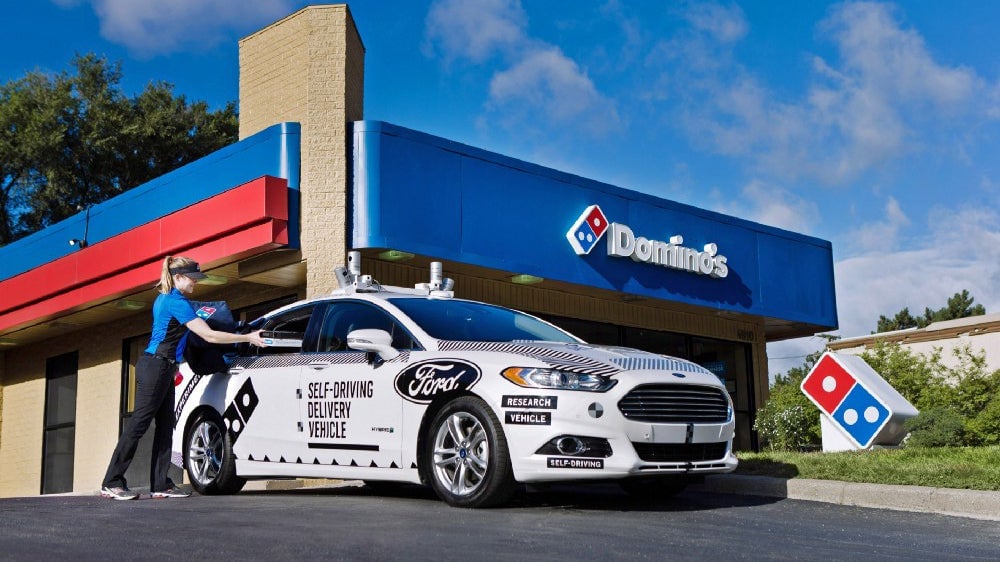Domino’s really wants robots to deliver your pizza
When one thinks of cutting-edge applications for robotics, computer vision, and autonomy, it’s unlikely that the first thing that comes to mind is pizza. But perhaps it should be.


When one thinks of cutting-edge applications for robotics, computer vision, and autonomy, it’s unlikely that the first thing that comes to mind is pizza. But perhaps it should be.
Over the last year, Domino’s has shown an unwavering commitment to removing humans from the pizza-delivery equation. First the pizza chain introduced DRU, the Domino’s Robot Unit, in Brisbane, Australia. The portly, pod-shaped robot uses cameras and sensors to carry pizzas on its own to hungry customers.
Then it introduced the DRU drone to the suburb of Whangaparaoa in New Zealand. The drone, built by the drone-delivery startup Flirtey, is fitted with a pizza-carry case, and can whisk a pizza to any customer within 1 mile of the Whangaparaoa store. Right now, residents need to have a back yard to be able to receive a drone pizza, but Flirtey is looking at ways to deliver to more densely populated areas.
And now, Domino’s has partnered with Ford in the US to use its self-driving research cars to start delivering pizzas in the Ann Arbor, Michigan area. That happens to be down the road from Mcity, one of the largest self-driving car research facilities in the world, run by the University of Michigan.
Random pizza orderers in the area will be selected to have the opportunity to have their pizza delivered by one of Ford’s Fusion Hybrid autonomous cars, which the company has been diligently working on for years. Ford has committed to releasing a fleet of self-driving taxis in 2021, and having a similar service available to employees at its Dearborn, Michigan, headquarters next year.
Customers will receive a text message when their pizza is nearly ready so they can head out to the curb, Ford said in a release shared with Quartz. They’ll then use a special code to unlock a compartment in the back of the modified car where their still-warm pizza is residing.
Humans won’t be completely cut out of the delivery chain. Ford said in a blog post that this test is essentially to learn how consumers interact with autonomous vehicles when they arrive at their house—rather than how these cars will get themselves to their drop-off locations.
Ford told The Verge that there will be company engineers driving the cars, along with other researchers in the car, meaning there’s likely to be at least 100% more people involved driving one of these pizzas to your door than during the average pizza delivery.